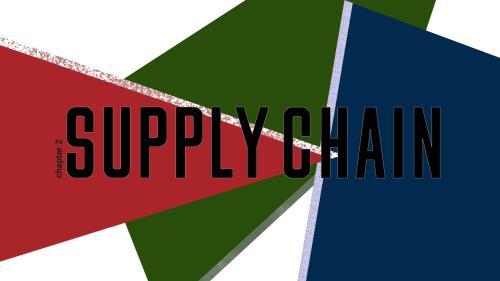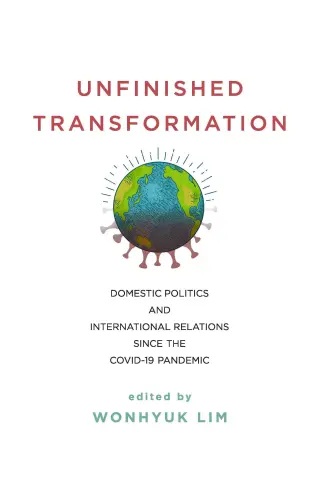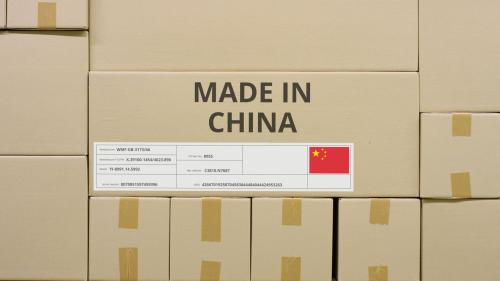On July 2, 2020, Eswar S. prasad testified before the U.S. House of Representatives Committee on Small Business Subcommittee on Economic Growth, Tax, and Capital Access. His written testimony on supply chain resiliency follows. View the full hearing.
Congressman Kim and honorable members of the Small Business Committee, thank you for the opportunity to provide my views on this important matter of how small businesses in the United States can strengthen the resiliency of their supply chains and how the government can assist in this process. In my remarks, I will focus on the global dimensions of supply chains.
Small businesses, as members of this committee well know, are crucial to the health of the U.S. economy. They account for about 40 percent of GDP and nearly half of total employment in the United States.1
The COVID-19 pandemic has ravaged nearly every part of the U.S. economy. It has had a much sharper deleterious effect on small businesses than on large corporations, partly because small firms have far smaller amounts of cash-on-hand and other buffers to insulate themselves against such large shocks.2 Financing conditions for small businesses also tend to tighten at times of heightened economic uncertainty and amidst signs of a sharp and protracted economic downturn, as is the case now.
Small businesses and associated jobs in retail, arts and entertainment, food services, personal services, and hospitality have proven to be especially vulnerable during the pandemic. But this vulnerability cuts across sectors and has affected small businesses across the board. It is difficult to envision the U.S. economy experiencing a strong recovery, especially in terms of employment, without a revival of the small enterprise sector.
In addition to the difficult domestic economic circumstances, the global nature of the pandemic has created additional complications for small businesses by disrupting their supply chains. I commend this committee for convening this hearing to focus attention on the nature of these disruptions, potential strategies for small businesses to reduce their vulnerability, and how Congress, and the federal government more broadly, can help in this process, both in the short term and over the longer run.
The benefits of global supply chains
There are two factors that have played a key role in the proliferation of global supply chains. The first is the reduction in both tariff and nontariff barriers to international trade, with the United States in the past playing an important leadership role in the dismantling of trade barriers worldwide. This has reduced frictions in the movement of basic and intermediate inputs across national borders. The second factor is the decline in transportation costs, including sea and air freight. This has made it possible to organize the structure of production in a way that allows small businesses to gain significant benefits from international trade. For small businesses, vertical integration—integrating different aspects of the production process within a single firm—is often not a viable option. Supply chains, both domestic and global, allow small businesses to focus on their core competitive advantage. Indeed, the very viability of the business models of some small businesses is predicated on such supply chains.
Thus, it is not just large multinationals, but also small and medium-sized businesses, that have benefited from global supply chains.3 These supply chains have enabled firms to source raw materials, intermediate inputs, and even final goods in more efficient and cost-effective ways than in the past. It has also allowed firms to benefit from access to different technologies and innovative production processes, some of which are then incorporated into their domestic operations. In some cases, these supply chains also give small businesses more familiarity with foreign markets and gives them a competitive edge in expanding their market shares abroad.
In discussing supply chains, it is worth keeping in mind that there is a distinction between Global Production Chains (GPC) and Global Value Chains (GVC). GPCs allow small firms to take advantage of natural resources, labor, technology, and capital at a lower cost than if they were restricted to domestic sources and suppliers. GPCs are clearly important for manufacturing firms. GVCs go beyond the production process to include distribution, after-sales service and support, and even recycling. This illustrates why global supply chains are relevant even for firms in the services sector.
How can small businesses enhance the resiliency of their supply chains?
This section of my testimony puts into broader context the factors underlying supply chain disruptions and their implications, and how small businesses can prepare for and adapt to such disruptions.
There are a number of reasons why supply chains might be subject to disruption. First, trade frictions with U.S. trading partners can lead to bilateral escalation of barriers to trade. Trade tensions with China have disrupted the global supply chain structures of many large and small companies.4 Uncertainties related to the North American Free Trade agreement while it was being renegotiated two years ago affected many U.S. firms that had tightly integrated supply chains on the North American continent.5
Second, geopolitical tensions can have similar disruptive effects as they foment uncertainty in the free flow of goods and services across national borders. For instance, rising tensions on the Korean peninsula have had a dampening effect on Asian supply chains related to electronics manufacturing, for which South Korea is a key node.6
Third, natural disasters and public health emergencies, either at the national or cross-national levels, can disrupt supply chains. The COVID-19 pandemic is of course a good illustration of this, as it has affected both the demand for and worldwide commerce in inputs as well as final goods.7 Another example is the extensive flooding in Thailand in 2011 that disrupted supply chains for automobile manufacturers and electronics manufacturers in other countries for whom components made by Thai firms were important inputs.8
Fourth, economic distress of other countries can hurt supply chains. As in the United States, difficult economic conditions in other countries disproportionately affect availability of funding for their small to medium-sized enterprises, which constitute an important part of global supply chains. Many emerging market and developing economies, particularly those with large external financial needs and high levels of foreign debt, are facing a particularly difficult financial squeeze as foreign investors turn away from them.9
How can small businesses deal with different types of uncertainty that could expose them to supply chain disruptions?
One strategy is diversification, both in terms of sources of inputs as well as markets for final products. Relying heavily on suppliers in a specific country might make good business sense from a pure cost minimization perspective, but increases the exposure to disruptions caused by the factors discussed above. There is a clear trade-off between efficient, linear supply chains that minimize costs versus more diversified supply chains that could drive up costs and reduce margins but provide some insurance against disruptions. Diversifying their export markets can also provide some protection for small businesses as it leaves them less subject to the risk of disruptions in specific markets.
Another strategy is onshoring, although this means giving up the benefits of globally integrated supply chains and implies less diversification of suppliers.10 One argument in favor of onshoring is that it brings jobs back to the United States. This is true from a narrow perspective and lines up with populist pressures for a retreat from globalization, which seems to be driven by the sense that this phenomenon has put the U.S. economy at a disadvantage relative to those of trading partner countries. This is debatable from a macro perspective. While the benefits from globalization have not been evenly distributed throughout the economy and across different segments of the U.S. population, the overall benefits of freer trade have been documented and clearly understood for some time.11 But for small businesses, the negative implications of a broad retreat from globalization are immediately apparent. There are substantial cost implications and even concerns about the viability of their business models, in addition to the potential loss of export markets, if there were to be a general retreat around the world from freer trade flows.12
Improved logistics management can help small businesses better manage their supply chains.13 By adopting technology that facilitates real-time tracking of intermediate goods and products at different stages of the manufacturing process, small businesses can better protect themselves against volatility and make suitable adjustments in the production process when faced with imminent disruptions. Logistics management becomes even more important in the international context, where the uncertainties are multiplied and such tracking becomes essential.
What can the U.S. government do?
While much of the onus of managing and optimizing their supply chains is the responsibility of small businesses, federal and local governments do have a role to play in facilitating this process. They can provide some forms of direct support, especially in challenging economic circumstances, but also ensure a more stable business environment that would be conducive to the success of small businesses.
One obvious and immediate priority is the provision of short-term financial assistance to help small businesses cope with the impact of COVID-related business disruptions. Congress and the administration have already taken a number of steps in this regard, including the Paycheck Protection Program that was part of the CARES Act. The Federal Reserve’s Term Asset-Backed Securities Loan Facility supports small businesses by lending to holders of asset-backed securities collateralized by new loans guaranteed by the Small Business Administration.14
Further assistance of this sort might be required if the recession proves to be protracted, which carries the risk of pushing many small businesses over the edge. Congressional oversight would be useful to ensure that the benefits of such government initiatives flow mainly to small and medium-sized businesses that are in most dire need of such aid.15 This is particularly important given that a disproportionate share of jobs in more vulnerable small businesses is accounted for by workers with lower wages and weaker skill levels, who are also among the most economically vulnerable.16
For exporting firms, availability of trade credit and export guarantees through the Export Import Bank of the United States (EXIM) can be an important tool to promote exports in the face of weak global demand. One of the concerns often expressed about the EXIM is that the bulk of its support, in dollar value terms (rather than in terms of the number of firms that receive support), has traditionally gone to large multinational corporations.17 The EXIM bank has attempted in recent years to strike a better balance, but Congressional oversight could certainly help push for even more of the institution’s support being directed towards smaller businesses.
The government should also continue to develop and consistently enforce domestic regulatory policies, including enforcement of anti-trust provisions already in the law that try to level the playing field between large incumbent firms and smaller firms as well as new entrants (which typically tend to be small).
More policy certainty in terms of U.S. trade relationships with other countries, including a de-escalation of trade wars, would help mitigate this source of supply chain disruptions. There are certainly legitimate concerns about whether American businesses have the same level of access to foreign markets that foreign exporters have to U.S. markets. While the objective might be a level playing field in international trade, this could be better promoted through negotiation rather than by nullifying existing trade agreements and imposing trade barriers on major trading partners, which creates uncertainty that hinders rather than helps small businesses.
Rather than taking a bilateral approach, it would be more productive to fashion multilateral agreements that ensure a consistent set of standards across a number of trading partners. This would be advantageous to small businesses, in particular, as it would imply lower compliance costs than in a scenario with fragmented trading arrangements. A multilateral approach would also be helpful in extracting better terms on trade deals with major trading partners such as China. For instance, multilateral agreements such as the Trans Pacific Partnership, which the United States ultimately backed out of, could cover a number of areas including expanded market access, stronger labor and environmental standards, better protection of intellectual property rights, and more consistent regulatory frameworks. Such agreements could also set minimum thresholds for other trade agreements around the world, which would benefit U.S. businesses.
Support for international organizations, such as the World Bank and the International Monetary Fund, is important to cushion the pandemic’s blow on developing economies, which matter to U.S. small businesses either as part of their supply chains or as export markets. From a longer-term perspective, it would be prudent for the government to also consider issues such as climate change, which might seem far removed from supply chain issues but in fact does have implications. The disruptive effects of extreme weather events spawned by climate change are particularly harmful for small businesses given that they have smaller buffers to cushion the effects of such shocks and their collateral effects.
Effective management of supply chains has significant potential benefits for small enterprises but also leaves them vulnerable to disruptions. This period of economic turmoil should lead to a re-evaluation of the resiliency of such supply chains and suitable restructuring of supply chains to reduce vulnerabilities. Small businesses can take a number of steps to promote such resiliency, but should receive the right kind of support from the government to facilitate this process. It is my hope that this committee’s work will help steer government policy in the right direction and help fortify small businesses, which are a bulwark of the U.S. economy.
-
Footnotes
- The typical definition of small businesses is that they are firms with fewer than 500 employees. Basic statistics on small businesses, including their employment and output, as well as their shares of overall macroeconomic aggregates in the U.S. economy can be found at: https://cdn.advocacy.sba.gov/wp-content/uploads/2018/12/21060437/Small-Business-GDP-1998-2014.pdf; https://www.sba.gov/sites/default/files/advocacy/2018-Small-Business-Profiles-US.pdf; and https://www.census.gov/data/tables/2017/econ/susb/2017-susb-annual.html
- The two-month window from February to April 2020 witnessed the sharpest drop in small businesses in recent history, even more than during a similar period during the Great Recession or any other twelve-month window. See Fairlie, Robert W. “The Impact of Covid-19 on Small Business Owners: Evidence of Early-Stage Losses from the April 2020 Current Population Survey,” NBER Working Paper No. 27309, June 2020. Another study illustrating the financial fragility of small firms and the economic devastation they have experienced is: Bartik, Alexander; Bertrand, Marianne; Cullen, Zoe; Glaeser, Edward L.; Luca, Michael; and Stanton, Christopher, “The Impact of COVID-19 on Small Business Outcomes and Expectations,” Harvard Business School NOM Unit Working Paper No. 20-102, May 2020. This study also finds that small businesses in finance, professional services, and real estate businesses experienced less disruption while the retail, arts and entertainment, food services, personal services, and hospitality experienced more disruption, with employment declines above 50 percent. Among other relevant sources, see: https://www.mckinsey.com/industries/social-sector/our-insights/covid-19s-effect-on-jobs-at-small-businesses-in-the-united-states
- For some general perspectives on how small and medium enterprises benefit from cross-border supply chains, see https://www.apec.org/Publications/2013/03/SMEs-Participation-in-Global-Production-Chains and https://researchportal.port.ac.uk/portal/files/1813970/TROTT_2014_cright_IJPR_How_SMEs_can_benefit_from_supply_chain_partnerships.pdf
- Some survey-based evidence of the supply chain disruptions faced by U.S. small businesses as a result of the U.S.-China trade war is at https://www.bizbuysell.com/news/poll-small-business-owners-react-to-the-US-China-trade-war-and-more. Some key findings from this survey and their implications are discussed in this article: https://www.cnbc.com/2019/10/05/us-china-trade-war-causing-small-biz-to-reinvent-customer-retention.html
- For a discussion of how NAFTA renegotiation may impact supply chains, specifically through changes in Rules of Origin requirements, see https://www.piie.com/blogs/trade-investment-policy-watch/why-renegotiating-nafta-could-disrupt-supply-chains
- A short piece pointing to how tensions on the Korean Peninsula could affect supply chains running through South Korea is at: https://www.efficioconsulting.com/en-gb/resources/insight/korean-conflict-potential-risk-your-supply-chain/
- For a discussion of how global supply chains have been affected by the pandemic and also how these supply chains have acted as a transmission mechanism for the global economic shock, see Barthélémy Bonadio, Zhen Huo, Andrei A. Levchenko, and Nitya Pandalai-Nayar, “Global Supply Chains in the Pandemic,” NBER Working Paper No. 27224, May 2020. This paper also makes the point that “renationalization” of cross-border supply chains does not in general make businesses more resilient to pandemic-induced contractions in economic activity. One study that examines how the asynchronous COVID spread in China and the United States resulted in a two-way impact on supply chains is summarized here: https://voxeu.org/article/covid-concussion-and-supply-chain-contagion-waves
- See, for instance, https://www.reuters.com/article/thailand-floods-supply-chain-idUSSGE79R00E20111028.
- See, for instance, https://www.oecd.org/coronavirus/policy-responses/foreign-direct-investment-flows-in-the-time-of-covid-19-a2fa20c4/ and https://www.dallasfed.org/research/economics/2020/0414.
- This point is made in the following article, which also analyzes the pandemic’s effects on regional and global supply chains: https://www.weforum.org/agenda/2020/04/covid-19-pandemic-disrupts-global-value-chains/
- While economists’ general consensus is that free trade improves consumer choice and welfare, the distributional effects of globalization are less clear. See, for instance, Dani Rodrik, “What Do Trade Agreements Really Do?” Journal of Economic Perspectives, Spring 2018. Also see Alan Blinder, Advice and Dissent: Why America Suffers When Economics and Politics Collide, Basic Books, 2018.
- For instance, see Simchi-Levi, David, and Edith Simchi-Levi, “Building Resilient Supply Chains Won’t Be Easy,” Harvard Business Review, June 2020.
- The following article makes the case that businesses need to better map their supply chains in order to identify potential vulnerabilities: Choi, Thomas Y., Dale Rogers, and Bindiya Vakil, “Coronavirus Is a Wake-Up Call for Supply Chain Management,” Harvard Business Review, March 2020. This study also references a survey of 300 firms in late January and early February, which revealed that 70 percent of firms were “still in data collection and assessment mode, manually trying to identify which of their suppliers had a site in the specific locked-down regions of China.” For additional perspectives on supply chain-related risk mitigation strategies, see https://knowledge.wharton.upenn.edu/article/veeraraghavan-supply-chain/ and https://www.mckinsey.com/business-functions/operations/our-insights/supply-chain-recovery-in-coronavirus-times-plan-for-now-and-the-future. Another study of supply chain vulnerabilities specific to smaller businesses is: Chowdhury, Priyabrata; Lau, Kwok Hung; and Pittayachawan, Siddhi, “Supply Risk Management in Small and Medium-Sized Enterprises: A Systematic Literature Review,” 2019. https://ssrn.com/abstract=3428943.
- Other initiatives include: Economic Injury Disaster Loans (EIDL), which provide up to $10,000 of economic relief to small businesses, non-profits, tribal businesses, and cooperatives that are currently experiencing a temporary loss of revenue; Small Business Administration Express Bridge Loans, which allow small businesses that currently have a business relationship with an SBA Express Lender to access up to $25,000 quickly; and Small Business Administration Debt Relief.
- One study based on an extensive survey of small businesses suggests that many small businesses “may have missed out on initial Paycheck Protection Program funds because of low baseline awareness and differential access to information relative to larger firms.” See Humphries, John; Christopher Neilson; and Gabriel Ulyssea, “The Evolving Impacts of COVID-19 on Small Businesses Since the CARES Act,” Cowles Foundation Discussion Paper No.2230, April 2020. Also see https://www.brookings.edu/opinions/the-small-business-relief-program-is-still-broken/. The Paycheck Protection Flexibility Act (June 2020) has addressed some of these concerns: https://www.congress.gov/bill/116th-congress/house-bill/7010/text
- During the two-month period from February to April 2020, the widespread closures of small businesses have been stratified by already existing inequalities: African-American, Latinx, Asian, immigrant, and female business owners have experienced disproportionate losses. See Fairlie, Robert W. “The Impact of Covid-19 on Small Business Owners: Evidence of Early-Stage Losses from the April 2020 Current Population Survey,” NBER Working Paper No. 27309, June 2020.
- In its annual report for FY 2019, the EXIM Bank states that its support for small businesses accounted for 27.5 percent of the total dollar value of authorizations and 89 percent of the total number of transactions. The annual reports are available at https://www.exim.gov/news/reports/annual-reports
The Brookings Institution is committed to quality, independence, and impact.
We are supported by a diverse array of funders. In line with our values and policies, each Brookings publication represents the sole views of its author(s).









Commentary
TestimonyHearing on supply chain resiliency
July 2, 2020